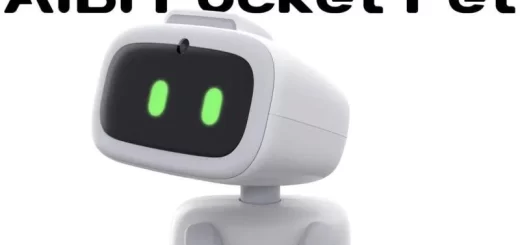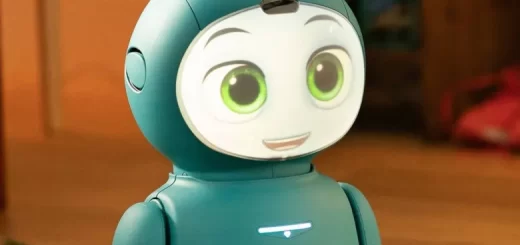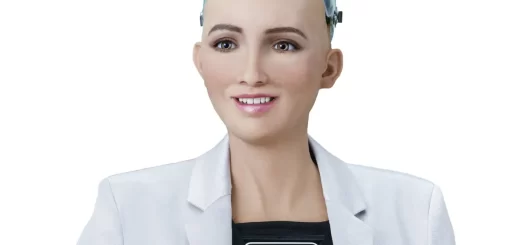Top trending topics about Grace robots, the healthcare robot created for coronavirus
Grace robots can handle routine tasks like vitals monitoring, medication reminders, and basic assessments, freeing up human nurses for more complex care and patient interaction. Grace can offer emotional support and conversation, enhancing their well-being.
Grace, the robot nurse
Grace was developed by Hanson Robotics, the same company that created Sophia, the world’s first robot citizen. Her creation was heavily influenced by the challenges of the COVID-19 pandemic, aiming to ease the burden on overworked healthcare professionals.
Grace robot features
Grace can speak three languages fluently: English, Mandarin, and Cantonese. This allows her to communicate with a wider range of patients and cater to diverse populations. This makes her a valuable asset in diverse healthcare environments. Unlike other robots, she combines emotional support with basic medical assistance.
Unlike regular thermometers, Grace can take your temperature without touching you, Her built-in thermal camera measures it remotely. She can engage in talk therapy sessions to help patients cope with stress and loneliness.
Grace robot nurses can offer continuous monitoring of patients, even at night or when nurses are unavailable, potentially catching critical changes early. Grace can interact with patients, offering emotional support, reducing loneliness, and providing a sense of security.
Grace is designed to be personable and engaging. She can smile, nod, and make eye contact, creating a more natural interaction with patients compared to traditional medical equipment. Born from the challenges of COVID-19, Grace embodies the potential of technology to support healthcare professionals and patients during difficult times.
Despite her impressive skills, Grace is not intended to replace human nurses. Instead, she aims to act as a helpful assistant, allowing nurses to focus on more complex and individualized care. Grace‘s name was chosen to reflect her compassionate and caring nature, inspired by the traditional meaning of “grace” as elegance, kindness, and goodwill.
Grace can interpret your facial expressions and body language, tailoring her communication and responses accordingly. Grace remembers your preferences and past interactions, creating a more personalized and engaging experience.
While not a professional musician, Grace can sing songs to cheer up patients and create a more positive atmosphere. Grace‘s development was accelerated by the need for additional support in healthcare during the COVID-19 pandemic.
Grace can lead group activities and tell jokes, promoting social interaction and reducing loneliness among patients. Grace can be programmed to adapt to different cultural norms and customs, ensuring respectful interactions with patients from diverse backgrounds.
Grace can play music and display calming images on her screen, creating a more soothing environment for patients, It doesn’t need breaks or sleep, offering continuous monitoring and support, This can be beneficial for high-needs patients.
Grace is designed to be engaging and personable. She can play games, tell jokes, and have simple conversations, helping to lift patients’ spirits and combat loneliness. Grace can get creative. She can draw pictures and generate stories based on your preferences, adding a touch of personalization and entertainment to her interactions.
Grace can lead you through gentle exercises and stretches, promoting physical well-being and recovery. While her primary focus is functionality, Grace rocks a stylish blue nurse’s uniform, making her presence more familiar and approachable in healthcare settings.
Grace is still under development, with new features and capabilities being added all the time. She represents the exciting potential of robots in healthcare. She might soon be able to assist with physical tasks like fetching objects or playing light games with patients. Grace‘s AI is constantly being updated and improved, allowing her to learn new skills and adapt to evolving healthcare needs.
What can Grace do?
Grace is a humanoid robot designed specifically to assist in healthcare, particularly for the elderly and those isolated due to the COVID-19 pandemic. Grace can communicate in multiple languages, making her accessible to a diverse patient population. She can participate in talk therapy sessions, helping patients process their emotions and thoughts.
Hanson Robotics created Grace, She is equipped with advanced artificial intelligence and is capable of Social Interaction, and Healthcare assistance. She can take vital signs like temperature, monitor patient conditions, assist in diagnosing patients, and assist with basic medical tasks under supervision.
Grace is designed to be a supportive companion for patients, reducing feelings of loneliness and providing basic healthcare assistance. While Grace is a remarkable piece of technology, she’s not intended to replace human healthcare professionals but rather to complement their work.
Grace can engage in conversations, offer companionship, and provide emotional support. Grace can communicate in English, Mandarin, and Cantonese. Grace can offer entertainment, games, and other activities to keep patients engaged and stimulated. Grace aims to augment human care by providing companionship, support, and practical assistance, especially in environments where human interaction might be limited.
You can follow science online on YouTube from this link: Science online
You can download Science Online application on Google Play from this link: Science Online Apps on Google Play
Grace robot nurse advantages and disadvantages, What is Grace the robot used for?
Moxi, the AI-powered robot nurse assistant, Can Moxi robots replace human nurses?
Healthcare robotics, Nursing care robots review, types, advantages, disadvantages and uses
Moxie robot advantages, disadvantages and what does a moxie robot do?
Robotic surgery cons, pros, uses and How does robotic surgery work?
Artificial intelligence in medical field advantages & how AI medical diagnosis changes medicine
Surgical robot types, advantages, disadvantages, How is robotic surgery different from traditional
Applications of Artificial intelligence in the medical field and Healthcare
Importance of Artificial intelligence in healthcare and medicine
Domestic robot or Service Robot types, advantages and disadvantages




